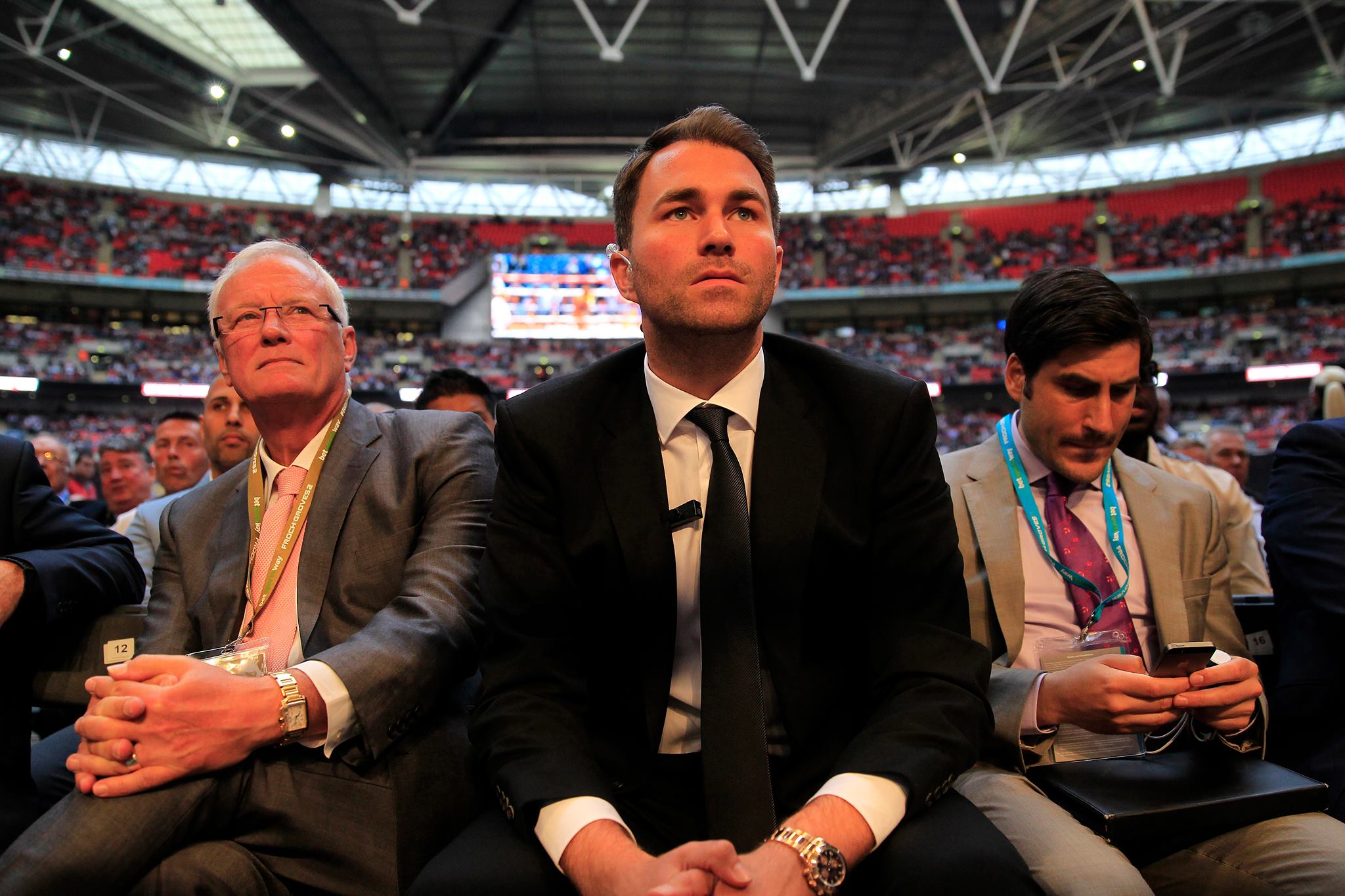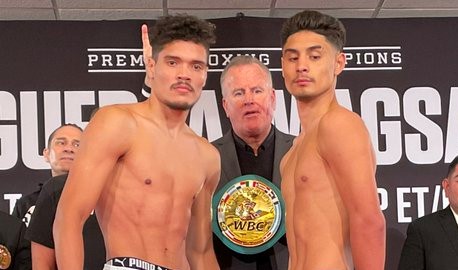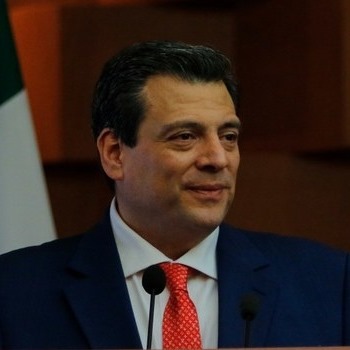by Charles Jay
Boxing is back on network television. and judging from the reaction, it’s going to back again.
CBS scheduled the first of these network telecasts on December 15 – an IBF bantamweight title fight between Leo Santa Cruz and Alberto Guevara, drawing a 1.3 rating and a 3 share. The rating number represents the percentage of all households that have television (114.7 million, at last count), while the share is a reflection of the households watching television at that particular time.
A week later NBC went to the well with its own attractive bout; Main Events’ rematch between Tomasz Adamek and Steve Cunningham, former cruiserweight champs who were now campaigning as heavyweights. That one had very similar numbers – a 1.2 rating and a 3 share. Network do fractional ratings as well, and according to a tweet by Chris Mannix of Sports Illustrated , who is employed on the NBC telecast, there were 3.2 million viewers in the very last part of the show.
Of course, there is nothing like a little controversy about the decision to get people talking, and that was exactly the case, as folks are still disputing who deserved the nod (Adamek won by split verdict). And NBC’s over-the-air network, which was supposed to televise two of the six fights in the Main Events package, may consider doing more.
The success was not totally unexpected; on NBC Sports Network, the cable companion of NBC which airs Main Events’ base series, where most programs draw less than 100,000 viewers and where hunting and fishing still do the best numbers (the residue of its days as the Outdoor Life Network), the December 8 “Fight Night” installment featuring Bryant Jennings was the only program in the first half of the month (aside from NBC “bonus” coverage of the New England Patriots-San Francisco 49ers game) to attract more than 200,000 viewers.
As for CBS, the great news is that its title bout retained much of the audience that had been watching the college basketball game between then-#1 Indiana and in-state rival (and perennial Cinderella squad) Butler, which drew a 1.5 rating. This would seem to be an indication that (a) there was a high curiosity factor about boxing, and/or (b) the casual fan was interested in seeing a fight that was promoting as being an all-action affair. The excitement level shouldn’t get too far out of control; after all, when CBS had last aired live boxing, back in 1997 (a Bernard Hopkins-Glen Johnson title fight), they drew a 2.1 rating. However, many in the business are intrigued by the possibilities.
And Golden Boy, which did the Santa Cruz-Guevara fight, should be overjoyed. The public at large is less interested in bantamweights than with the bigger guys, and this appeared to be an event with niche appeal from an ethnic standpoint (Latin) and perhaps not ideal for a more mainstream reach, which would seem to be required. But it worked.
Does network TV make a big difference vis-a-vis cable? Well, cable does penetrate into 90% of all U.S. television households, and to be more specific, Nielsen estimates that the penetration of digital cable is upwards of 52%. However, the individual “free” networks are still much more accessible to homes as a whole than any individual cable channel, and CBS leads the pack in terms of affiliate aggregation. Obviously, where cable enterprises like ESPN charge operators on a per-subscriber basis, the broadcast network must derive their revenues from advertisers.
As mentioned, CBS had last been seen on the air with a live fight more than fifteen years ago, and they had gone through a period where they mandated that promoters bring the sponsor along with them, as their sales department had a hard time with selling the sport. Quaker State was one of the advertisers that was brought aboard through that route, and maybe this is a formula that could work for the future, although selling TV spots is generally not thought to be part of the core competency of a boxing promoter. Reportedly Antonio Tarver’s promoters were considering actually buying their way onto ABC for one of his fights a couple of years ago (for purposes of re-selling ad spots), but that plan was scratched.
All three networks (at the time) had been active rather active in boxing up until the early 1990s. NBC had probably been the most active and innovative most recently, airing two separate series, its own regular installments as well as a branded “Ringside” series, which sometimes aired on the same day, making for a doubleheader, and featuring the so-called “crossroads” fights, which were highly competitive. Many viable commodities were built through this shaking-out process, as NBC followed their storylines.
What will the future hold? Well, one would think it will include more attempts to do network boxing. It can be cheaper to acquire and produce than a football or basketball game, and if it can do numbers that are in the same ballpark, if you pardon the pun, it may see some revival. One would imagine that for it to continue, promoters would have to be consistent in offering either (a) great fights, (b) fights of genuine significance or (c) recognizable names (we assume all three at once might be too much to ask for at the moment). And they must do it where it makes sense from an economic standpoint, which means that the network will have to experience some success selling its advertising “avails” and the fighters can’t overprice themselves. This is easier said than done, because naturally there is going to be a battle with pay-per-view and premium cable, neither of which was as widely entrenched in homes during the last big wave of live network TV boxing.
CBS sought some integration, billing its Santa Cruz-Guevara bout as “Showtime Boxing on CBS,” using it in association with the Amir Khan-Carlos Molina fight that was carried later that evening on another Viacom property, Showtime. And this may go toward illustrating a point; when the so-called “marquee” names like Khan can find their way onto over-the-air television, while making enough financial sense to be a genuine stand-alone, then boxing would have experienced a complete and total comeback on the broadcast networks.
For now, though, we’re sure most people inside the industry who are rooting for such a thing to happen would be content with the latest developments as a pretty decent jumping-off point.


















